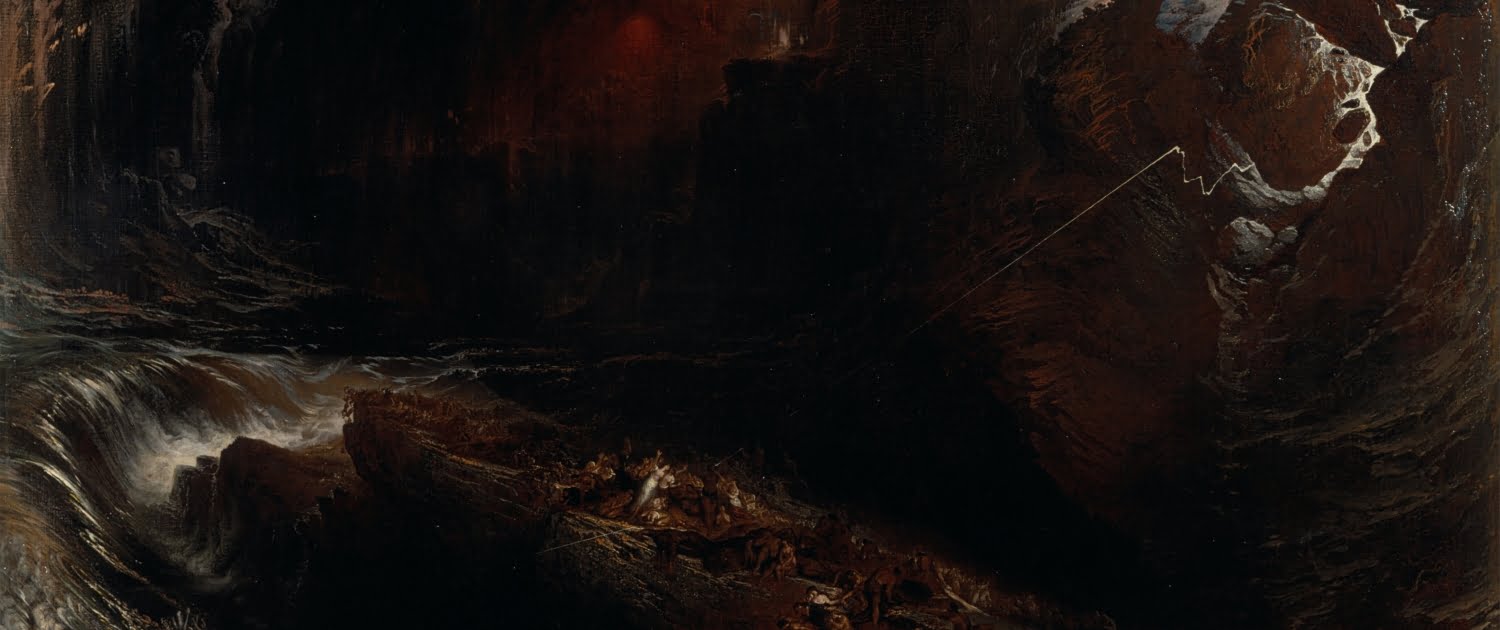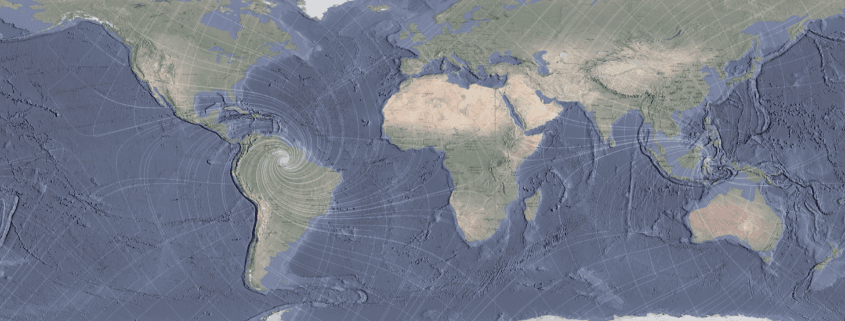Introduction
Early scholars everywhere recognised that, so far as it was known to them, a great break had occurred in Earth’s history, or at least in the human portion of it. The break had been caused by a vast flood, which for Christian and Jewish historians was the Deluge of Genesis, and for classical writers the Great Flood of Deucalion. To all these authors this inundation became a highly important marker event.
Not only Christian and Jewish savants, but others of the pagan pre-classical and oriental worlds, agreed that the Deluge had terminated an earlier Golden Age, itself conceived of in many quarters as one of a succession of former world ages individually characterised symbolically by metals (bronze, iron, etc), elements (fire, water, etc), or by astronomical motifs (solar, lunar, etc). Moreover, ancient traditions collected much later from lands such as the Americas and Australia, certainly unknown to most early European, Near Eastern and Oriental writers, also preserved closely similar beliefs in which ‘suns’ were sometimes substituted for ‘ages’ as vague measures of spans of time long past. Tantalisingly, the actual durations of such ‘ages’ or ‘suns’ were seldom if ever stipulated.
Other early thinkers, especially those of pre-Hellenic and early classical Greece, devised the concept of cyclical world history, which, because it postulated a succession of different ages, again involved the idea of great spans of time. These, though of vague durations, were usually stated in terms indicating an antiquity far greater than the 1,656 and 2,342 year dates obtained by biblical studies. This doctrine was followed by, and probably led to the development of, that of the cyclical Great Year, championed by Empedocles and the Pythagorean philosophers of ancient Greece. The doctrine itself was apparently based upon earlier Chaldean teachings which advocated that the Universe, though eternal, undergoes cyclical destruction from either fire or water at lengthy but irregular intervals. The Deluge was held by them to be the most recent of these destructions. Popularised by Berosus, a Babylonian scribe of the 3rd century BC, the doctrine of the Great Year became very influential and was subscribed to by many famous cosmologists and philosophers of the day, including Chrysippus, Zeno and Plato. It survived in modified form down to at least the beginning of the 19th century.
– Cataclysm: Compelling Evidence of a Cosmic Catastrophe in 9500 B.C., Allan and Delair (1997)
The following is one such account; an excerpt from De Die Natalie, written by the Roman grammarian Censorinus in 238 A.D.
Having said enough in regard to the centennial interval I shall now speak of the Great Year, of which the length is greatly varied, whether in the usages of the people or in the traditions of authors; some making it consist in the revolution of two ordinary years, others in the union of many thousands. I will try to explain these differences. The ancient people of Greece having remarked that during the time of the annual revolution of the sun, there are about thirteen risings of the moon, and as these occur with more exactness when two years are taken together, thought that the natural year corresponded to twelve and a half lunar months. They thus established their civil years in such a manner that with the aid of an intercalation, some are composed of twelve months and others of thirteen, called each isolated year a solar year, and the union of the two, a Great Year. They called this space of time trieteries (a cycle of three years) because the intercalation took place every third year; although the revolution was accomplished in two years and was in reality but a dieteries (a cycle of two years). This is why the mysteries celebrated in honour of Liber Pater are named trieteries by the poets.23 This error was subsequently acknowledged;24 they doubled the space of time and established tetræteries (a cycle of four years) which returning every fifth year was called pentæteries.25 The great year, thus formed of four years, was more convenient, in that the solar year was composed of about 365¼ days and this fraction enabled a full day to be added every fourth year.26 This is why that on the return of every fifth year the games were celebrated in Elis27 in honour of Jupiter Olympius and at Rome in honour of Jupiter Capitolinus. But this space of time, which only coincides with the course of the sun and not with that of the moon, was again doubled; and it was called octæteries (a cycle of eight years) then called euneæteries (a cycle of nine years) because this new year returned on the ninth year. This period of time was considered throughout nearly all of Greece, as the real Great Year, because it is composed of years without any fraction, as all Great Years should be. In effect, this was composed of eight full years and 99 full days.28 The institution of this octæteries is generally attributed to Eudoxus of Cnidus,29 but it is said that Cleostrates of Tenedos was the first to invent it, and after him came others who, with the aid of different intercalations of months, have each composed an octæteries. Thus Harpalus Nauteles, Mnesistratus and others calculated such periods; amongst them Dositheus, whose work is called the Octæteries of Eudoxus. It is from this cycle that in Greece many religious festivals were celebrated with great ceremony. At Delphos, the games called Pythian were anciently celebrated every eight years. The most exact Great Year is the dodicæteries, a cycle composed of twelve natural (solar) years. It is called the Chaldean cycle. The astrologers did not regulate it by the course of the sun or the moon, but after other observations, because they said that only this space of time could embrace the different seasons, the epochs of abundance, of sterility and of plagues.30 There are still other Great Years, as the Metonic year invented by the Athenian Meton,31 which was composed of 19 solar years, also called the enneadicacæteries (a cycle of 19 years). Seven months are intercalated and 6940 days are counted. The year of the Pythagorean, Philolaus, is composed of 59 years and of 21 intercalated months; the year of Callippus, of Cyzicus, is composed of 76 years with the intercalation of 28 months; the year of Democritus is formed of 82 years and 28 intercalary months;32 while that of Hipparchus is composed of 304 years, with the intercalation of 112 months.
This difference in the length of the Great Year comes from the fact that the astrologers did not agree either on what should be added to the 365 days of the solar year, or what should be taken from the thirty days of the lunar month. On the other hand, the Egyptians, in the formation of their Great Year, had no regard to the moon. In Greece the Egyptian year is called cynical (dog-like) and in Latin canicular,33 because it commences with the rising of the Canicular or Dog star, to which is fixed the first day of the month which the Egyptians called Thoth.34 Their civil (equable) year had but 365 days without any intercalation.35 Thus with the Egyptians the space of four years is shorter by one day than the space four natural (Julian) years, and a complete synchronism is only established at the end of 1461 years. The 1461st year by some is called the Heliacal and by others the Year of God.36 There is also a year which Aristotle calls Perfect,37 rather than Great, which is formed by the revolution of the sun, of the moon and of the five planets, when they all come at the same time to the celestial point from which they started together. This year has a great winter called by the Greeks the Inundation and by the Latins The Deluge; it has also a summer which the Greeks call the Conflagration of the world. The world is supposed to have been by turns deluged or on fire at each of these epochs.38 According to the opinion of Aristarchus this year was composed of 2484 solar years; according to Arestes of Dyrrachium, it was 5552 years; according to Heraclitus and Linus it was 10,800;39 according to Dion40 it was 10,884; according to Orpheus it was 10,020 years; and according to Cassandrus it was 3,600,000 years. Others have thought it infinite; and that it would never recur.
- 23 This explanation can hardly be deemed satisfactory.
- 24 Cognito errore. The common explanation is that the equable year was composed of 365 days; the lunar year of 354. Two solar years together made 730 days; while two lunar years made 708 days. Hence two solar years exceeded two lunar years by 22 days. Out of these 22 days of excess, the ancient Greeks composed an intercalary month; but this assumes that whilst the Greeks knew of the equable solar year they persisted in using a lunar one, which may have been true when the religion of Liber Pater was overthrown, but never so long and wherever it survived. The 22 (really 25) day month (Cronia) was made up of the difference between the 360 and 365 day solar years.
- 25 “They established a tetræteris which was called pentæteris.” Here we observe the fine Italian hand. Censorinus could scarcely have written this, nor the deduction from it which follows below in reference to the Olympic festival. The Greeks had no tetræteris, but a pentæteris, or interval of five years. The tetræteris was established by Julius Cæsar and enforced by Augustus. For a full explanation of this jugglery see “The Worship of Augustus Cæsar,” ch. VIII.
- 26 Quæ unum in quadriennio diem conficeret. The manuscript of Cologne says: “Quæ primum in quadriennio diem conficeret.”
- 27 Agon et in Elide . . . celebratur. See Pindar (in Olymp. Ode, II, VIII, and IX,) and Pomponius Mela (I, ii, 3). Censorinus (or rather his revisor) is here endeavouring to account for the ancient 5-year Olympiads of the Elians by confusing them with the later 4-year Olympiads employed in Rome. In a similar manner Max Ideler argued the ancient 9-day week down to 8 days, while Rev. Dr. Greswell shaved it down to 7 days, to make it fit his theory of a primeval Hebrew year and week. This may be passable theology, but it is very bad arithmetic.
- 28 Nam dies sunt solidi, uno minus centum. This passage is certainly altered. Lindenbrog, taking a psasage from Solinus (ch. 2,) and from Geminus (De apparentiis caelest., c. 6, p. 129), has reëstablished it in the following manner: Nam dies sunt solidi CIↃCIↃDCCCCXXII. Menses uno minus centum annique vertentes solidi octo. Censorinus probably wrote eight full (Julian) years or 99 full months.” This is approximately 2922 days.
- 29 Hanc. . . . ab Eudoxo Cnidio institutam. See Diogenes Laertes, VIII, in Eudoxe: also Suidas.
- 30 Quod in eo dicunt tempestates, etc. The manuscript of Cologne says: Quod in eo dicunt tempestates frugumque proventus, ac sterilitates, item morbos salubritatesque circumire. Similar effects of the Jovian cycle are attributed by illiterate persons at the present day. See note in “Politics of Money,” chap. III. It was calculated from the orbital period of the planet Jupiter.
- 31 Meton Atheniensis. Elien [Aelian] (Variar. Histor., X, 7), makes Meton a Lacedæmonian. His cycle was not of 19 years, but of 235 lunations.
- 32 Democritus. See Diogenes Laertes, IX, in Democritus.
- 33 Caniculæ sidus exoritur. See Pliny (II, ch. 47; XVIII, c. 68), and Varro (De re rust., I, i, c. 28).
- 34 Thoth is sometimes written Thot, Athot, Tot, Taat, etc. It was the name of an Egyptian divinity who had the Dog for his symbol and was worshipped as the Son of God. Cicero, de Divinat., I, 3; Lecaut, Instit., I, i, c. 6.
- 35 Solos habet dies, CCCLXV. Perhaps it should read solidos instead of Solos.
- 36 The Year of God means the Year of the Sun. Pollux, I, T, c. 7; Carrion, Emend., I, ii, c. 1. In many of the ancient languages one word stood for both the Luminary and the Creator.
- 37 Est præterea annus, quem Aristoteles maximum. . . adpellat. In Aristotle (Meteor., I, 14) and Plato, in Timæus. On the Great Year of the ancients, see Apulæus [Apuleius] (dogm. Platon); Plutarch (De placit. philos., II, 32); Achilles Tatius (Proleg. in Arat.); Josephus (Antiqu., I, 4); Tacitus, (Dialog. De Orator.); Solinus (c. 36); Photius (Biblioth., p. 714); Stobæus (Eclog. phys., I, ii); Cicero (De natura Deor., II); Servius (ad Æneid, III, v. interea magnum sol circumvolvitur annum); Jul. Firmicus (Mathes., in præfat. I): Festus XI. Macrobius calls this year “Mundanus” (in somn. Scip. II, ii). Cf. “The Worship of Augustus Cæsar.”
- 38 Nam his alternis temporibus mundus tum exignescere tum exaquescere videtur. On the Deluge and the Destruction of the word by Fire, se Plato (in Tim.); Clement Alexandrinus (Strom. 5); Arnobe [Arnobius] (Advers. gent. I); Minutius Felix (Octavius); Diogenes Laertius in vita Zenonis); Seneca (Quaest. Nat. iii, 27, 28, 29); Jul. Firmicus (Mathes., III, i); Macrobius (in Somn. Scipion. II, 10); Ovid (Metam. I); Augustine (De civit. Dei, XII, 10).
- 39 Heraclitus et Linus decem millium octogintorum. According to Plutarch (De placit. philos. II, 32) and to Stobæus (Eclog. phys. I, ii), these authors made the great Precessional year to consist of 18,000 common years.
- 40 Dion. This Dion was probably the illustrious mathematician who is mentioned by Augustine (De civit. Dei, XXI, 8).











Trackbacks & Pingbacks
… [Trackback]
[…] There you will find 36462 more Infos: nobulart.com/the-perfect-year/ […]
Comments are closed.